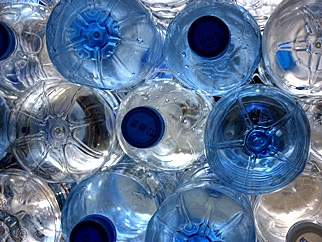Recession upends beverage packaging trends
March 11, 2015

Over the last two years, we have experienced a global economic downturn, declining consumer spending power, volatile packaging materials prices and more difficult access to capital investment. According to Canadean's latest special interest report "Innovation in Beverage Packaging 2010", this unwelcome combination of factors has resulted in a slowdown and, in some cases, complete reversal of longer term beverage packaging design trends.
For many years the key drivers of beverage packaging design were increased use of added value and convenience features, more sophisticated packaging materials, smaller 'on-the-go' packs and more elaborate shapes, designs and print. But over the last two years the focus has shifted strongly to cost and cost-related factors such as materials reduction, light-weighting and improvements in line efficiency, filling techniques and cost-effectiveness. And all this has to be achieved, wherever possible, without the loss of functionality and quality and at the same or a lower price.
As some countries have begun to emerge from recession in 2010, there are signs however that the underlying long-term economic, demographic and consumer-led changes are beginning to have the upper influence again, causing packaging design to revert to trend.
These are the findings of Canadean's report which examines key developments in beverage packaging design at a global level over the last two years.
Global Soft Drinks, Beer and Dairy Drinks Packaging by Pack Type, 2010
Pack Type | % Share by Volume |
Glass bottles | 17% |
HPDPE bottles | 5% |
PET bottles | 34% |
Cartons | 11% |
Sachets | 6% |
Bag-in-box | 2% |
Unpackaged | 9% |
Other packaging | 6% |
Cans | 10% |
Total | 100% |
Source: Canadean Beverage Packaging Service
With deteriorating economic conditions, falling consumer spending power and rising employment in many countries across the world, competition at the retail level has increased enormously since 2008. This has resulted in strong downward pressure on product pricing and hence also packaging costs.
The main beneficiaries of this were initially the discount retailers. They achieved accelerated growth in many countries by taking share from the supermarkets as consumers searched for greater value for money. In response, many of the supermarkets revamped and extended their own ranges to compete with the discounters at the value end of the market. This resulted in an explosion of private label worldwide and yet more competition and pressure on product and packaging prices.
As some countries have begun to come out of recession in 2010, this strategy appears to have paid off for the supermarkets, as although still currently dominated by materials reduction and cost considerations, there appear to be early signs of a return in packaging design towards value added and convenience features.
Some key global trends over the last 2 years include:
Continued PET growth in most beverage categories - with refillable PET taking share again in carbonates and packaged water
Hot fill PET being increasingly used for hot fill juices and nectars and panel-less hot fill PET bottles taking share in various categories such as iced ready-to-drink tea and coffee
Extended use of bio-degradable plastics
General shift from heavy, rigid containers to lighter weight, flexible packaging and pouches
Increase in the growth rate of barrier plastics
Light-weighting and material saving measures extending from the major to the smaller brands
Reduction in bottle and closure weights without loss of performance and functionality
Greater emphasis on environmental issues and a shift in concern from packaging waste and recycling towards carbon emissions and total environmental impact of product and pack
China is now the single greatest powerhouse of global packaging demand, and domestic consumption in China and some other emerging markets is now beginning to take off strongly. As a result, while cost performance and environmental factors will always remain key drivers of packaging demand, previous market features are expected to resurface as the key drivers of packaging innovation and change. These include rising disposable income levels, a return to trading up and convenience features as well as underlying demographic changes such as long term trends toward smaller household sizes, longer working hours, urbanization and globalization. All these factors will ensure that packaging continues to play a vital role in determining the success or failure of new products and brands over the next 5 years.
BRIC Countries: Trends in Packaging for Soft Drinks, 2003-2010
Packaging type | Incremental Valume Growth (billion liters) | Avg. Growth Rate by Volume |
Plastic bottles | 42.4 | 12% |
Cans | 3.5 | 9% |
Cartons | 2.9 | 10% |
Pouches | 1.0 | 4% |
Other packaging | 9.1 | 25% |
Unpackaged | 0.4 | 2% |
Total | 56.7 | 11% |
Note: BRIC = Brazil, Russia, India and China
Source: Canadean Beverage Packaging Service
'Innovation in Beverage Packaging, 2010' is a new special-interest report published by Canadean aimed at providing a summary of trends and developments in packaging design within the global beer, dairy and soft drinks markets. The report is an update of Canadean's 2008 study, focusing particularly upon developments over the last 2 years. For further information about this report, email [email protected].
About the Author(s)
You May Also Like


